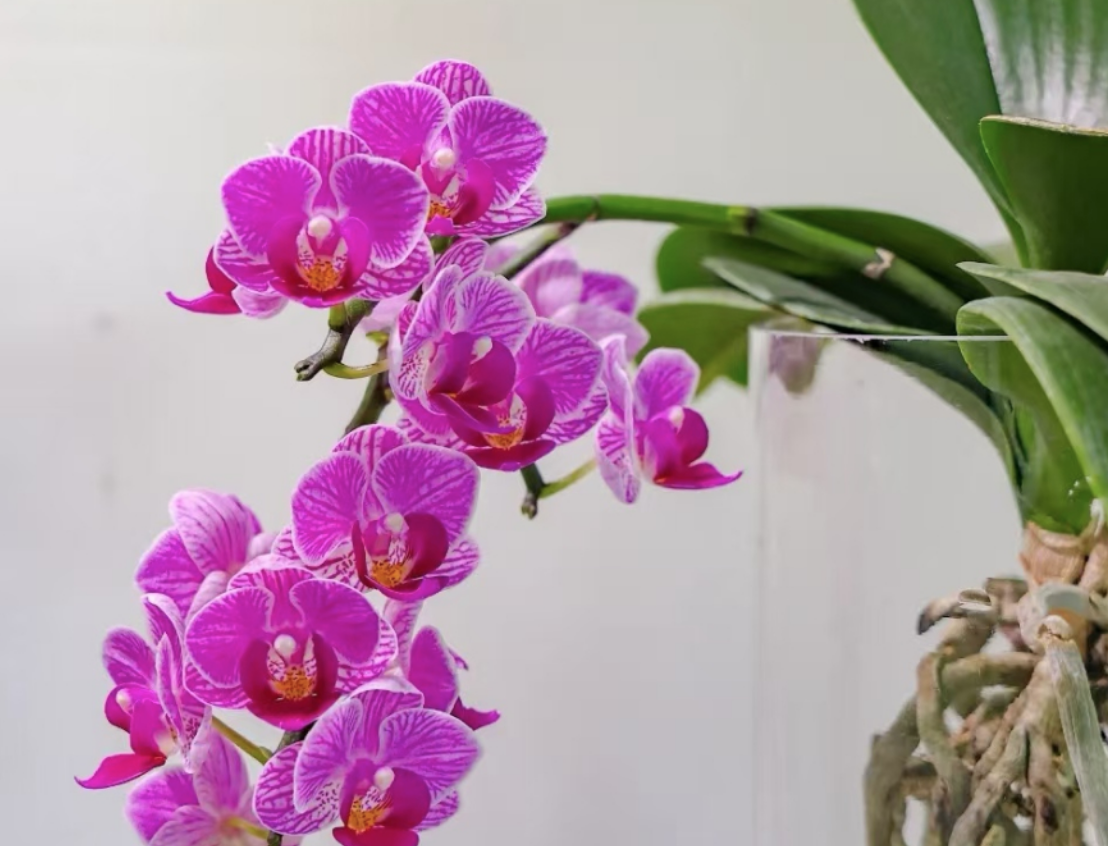For those who have gotten into cultivating phalaenopsis orchids at home, what they care most about is how to extend the flowering period. However, many people who grow phalaenopsis orchids no longer expect to extend the flowering period, and they are just hoping that the orchids can bloom smoothly again. The reason for this is that phalaenopsis orchids are native to tropical rainforests. If the indoor cultivation environment is not appropriate, the orchids may not bloom, or when they do bloom, the flowers may become smaller and smaller. So, what exactly are the reasons for this? What can be done to solve the problem of smaller flowers when phalaenopsis orchids rebloom?
Generally speaking, when the flowers of reblooming phalaenopsis orchids become smaller, the main factors include insufficient nutrients, problems with the roots, an unsuitable environment, and the aging of the plant. Let's first talk about insufficient nutrients. It should be noted that for phalaenopsis orchids, the nutrients they need are quickly depleted each time they bloom. If after the first batch of flowers wither, fertilization is not carried out in a timely manner, the nutrients in the soil alone are simply not enough for the growth of new flower buds. Therefore, the flowers will naturally be smaller when they rebloom. It is recommended to regularly apply nitrogen, phosphorus, and potassium fertilizers. Nitrogen fertilizers can make the leaves strong, phosphorus fertilizers are specifically for promoting flowering, and potassium fertilizers can help the plant get sick less.
Secondly, problems with the roots can also affect flowering. The roots are the core of every plant. To successfully absorb nutrients and water, it is necessary to avoid overwatering, otherwise the roots will rot. But watering too little will also cause the roots to dry out. Whether watering too much or too little, it may lead to soil compaction, which will prevent the roots from functioning properly. So, the amount of watering must be appropriate. Water when the soil is dry, and use loose and breathable soil.
In addition, an unsuitable environment won't work either. Phalaenopsis orchids are inherently sensitive to temperature, light, and humidity. If the temperature is not up to standard when they rebloom, it will affect the size of the flowers. They prefer an environment with a temperature of 18 to 28°C. If the light is too dark or too bright, or the air is too dry, the flowers will not grow well.
Finally, the aging of the plant is a natural reaction. Just like humans, when the plant is too old, its functions will degenerate. Even if the nutrients are sufficient, the vitality of its cells will decline, and naturally its ability to absorb nutrients will deteriorate, and the flowers will become smaller and less attractive. If it is really difficult to cultivate in this situation, you can try to propagate by division, or simply buy new seedlings!
What should be done if the flowers of phalaenopsis orchids are small?

Share with
Tagged in :




Leave a Reply